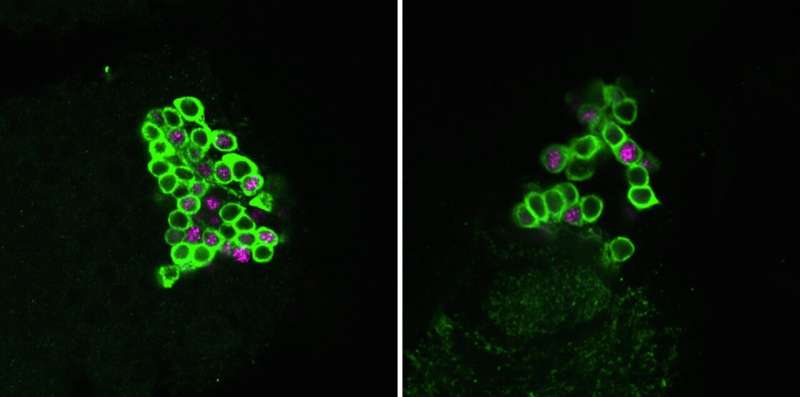This article has been reviewed according to Science X's editorial process and policies. Editors have highlighted the following attributes while ensuring the content's credibility:
fact-checked
peer-reviewed publication
trusted source
proofread
Type of cellular stress involved in Parkinson's disease destroys more neurons when it occurs at night, study finds

Disturbances in sleep patterns and the internal biological clock are frequently associated with Parkinson's disease. However, the link between biological rhythm and neuronal degeneration remains unclear. A team from the University of Geneva (UNIGE) has investigated the destruction of neurons at different times of the day, using the fruit fly as a study model.
The scientists discovered that the type of cellular stress involved in Parkinson's disease was more deleterious to neurons when it occurred at night. The study is published in Nature Communications.
Parkinson's disease is a progressive neurodegenerative disorder characterized by the destruction of certain neurons in the brain: dopamine neurons. The main symptoms of this disease are tremors, slowness of movement and muscular stiffness. Epidemiological studies show that other disorders may be associated, such as disturbances of the sleep and of the circadian cycle.
This cycle, defined by the alternate periods of wakefulness and sleep, lasts around 24 hours and constitutes the human body's internal clock that regulates almost all its biological functions. In particular, the circadian clock controls the secretion of the "sleep hormone" (melatonin) at the end of the day, variations in body temperature (lower in the early morning and higher during the day), and metabolism in periods of fasting (during sleep) or energy intake (during daytime meals).
Cause or consequence?
Disruptions in circadian and sleep rhythms can be observed years before the onset of motor symptoms in Parkinson's patients. But does disruption of the circadian cycle contribute to the development of the disease, or is it a consequence?
This question is at the heart of work in the laboratory of Emi Nagoshi, associate professor in the Department of Genetics and Evolution at the UNIGE Faculty of Science. Her team uses the fruit fly as a study model for Parkinson's disease and to dissect the mechanisms of dopamine neuron degeneration. Scientists can simulate the onset of the disease by exposing the flies for a few hours to a drug that induces oxidative stress, leading to the death of dopaminergic neurons in the following days.
Flies' neurons are more sensitive at night
Despite being very different animals, the biological clocks of flies and humans are comparable. To determine whether the circadian cycle could influence the onset of Parkinson's disease, flies were exposed to oxidative stress at six different times of the day and night.
"We waited seven days to observe the survival of the targeted neurons under the microscope, and we found a greater number of destroyed dopaminergic neurons when the exposure had been made during the night hours," explains Michaëla Dorcikova, ex-doctoral fellow in the Department of Genetics and Evolution and first author of the study.
To understand whether these observations are dependent on circadian rhythm, the scientists exposed mutant flies with disrupted circadian cycles to the same stresses. The researchers observed that the neurons of flies without an internal clock were more sensitive to oxidative stress. These results suggest that the circadian clock exerts a protective effect on dopaminergic neurons against oxidative stress.
Exploring risk factors for Parkinson's disease
Most Parkinson's cases result from an interaction between multiple genetic risk factors and lifelong exposure to environmental factors such as pesticides, solvents and air pollution. The results show that an oxidative stressor, such as a pesticide, administered at a specific time of day can have a critical impact on the survival of dopaminergic neurons.
"Our results further suggest that genetic variations in circadian clock genes may represent a risk factor for dopaminergic neurodegeneration. We now need to ascertain the relevance of these results in humans," concludes Emi Nagoshi, the study's final author.
More information: Michaëla Majcin Dorcikova et al, Circadian clock disruption promotes the degeneration of dopaminergic neurons in male Drosophila, Nature Communications (2023). DOI: 10.1038/s41467-023-41540-y




















